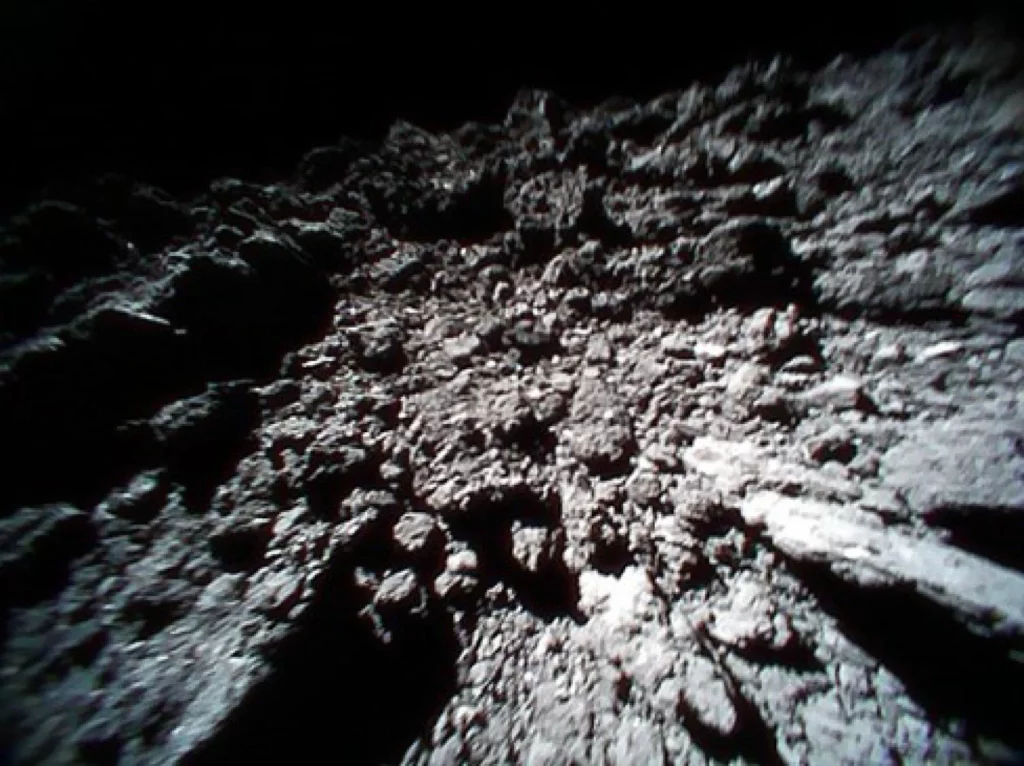
Not all magnetic fields are created equal. While Earth currently boasts a respectable magnetic field strength of 50 microtesla, scientists have discovered that the outer solar system was built using magnetic forces so weak, they make our planet’s magnetic field look like a superhero. By studying tiny particles returned from asteroid Ryugu, scientists have found the first evidence that magnetic forces influenced planetary formation even in the solar system’s distant reaches.
More than 4.6 billion years ago, our solar system began forming from a dense cloud of interstellar gas and dust. This material collapsed into a swirling disk, with most gathering at the center to form the Sun. The remaining matter formed a solar nebula – a disk of swirling, ionized gas. When this newly formed Sun interacted with the ionized disk, it generated magnetic fields that threaded through the nebula, helping to drive accretion and pull matter inward to form planets, asteroids, and moons.
Scientists at MIT and their colleagues analyzed three particles from asteroid Ryugu, which were collected by the Japanese Aerospace Exploration Agency’s (JAXA) Hayabusa2 mission and returned to Earth in 2020. These samples came from two different landing sites on the asteroid: one from the undisturbed surface and two from subsurface materials exposed by an artificial impact.

The research team found that magnetic fields in the outer solar system, beyond 7 astronomical units (AU) from the Sun, were no stronger than 15 microtesla. For comparison, Earth’s current magnetic field is around 50 microtesla. This discovery helps complete our understanding of how magnetic forces influenced planetary formation throughout the solar system.
Previous research had shown that magnetic fields in the inner solar system – the region extending from the Sun to about 7 AU – measured between 50 to 200 microtesla. However, until this study, published in AGU Advances, scientists weren’t sure whether such magnetic influence extended into more remote regions.
The research team placed the millimeter-sized particles in a magnetometer – an instrument that measures the strength and direction of a sample’s magnetization. They then applied an alternating magnetic field to progressively demagnetize each sample. “Like a tape recorder, we are slowly rewinding the sample’s magnetic record. We then look for consistent trends that tell us if it formed in a magnetic field,” says study lead author Elias Mansbach in a statement.
When the samples showed no clear signs of a preserved magnetic field, researchers concluded that either no nebular field was present or it was too weak to be recorded in the asteroid’s grains. The team also reexamined data from previously studied meteorites believed to have formed in similar outer regions. One of these samples showed evidence of a 5-microtesla field, supporting their findings from the Ryugu particles.

“When you’re further from the sun, a weak magnetic field goes a long way,” notes MIT professor Benjamin Weiss. “It was predicted that it doesn’t need to be that strong out there, and that’s what we’re seeing.”
Scientists may soon learn more about these ancient magnetic fields. Samples from another asteroid, Bennu, were delivered to Earth in September 2023 by NASA’s OSIRIS-REx spacecraft. Since Bennu shares similarities with Ryugu, these samples could provide additional evidence about magnetic conditions in the early outer solar system.
The post Tiny Asteroid Grain Cracks 4.6-Billion-Year-Old Magnetic Mystery appeared first on SpaceChatter.